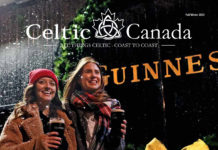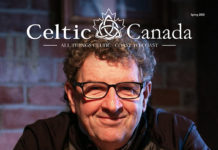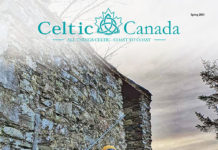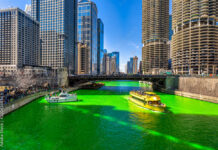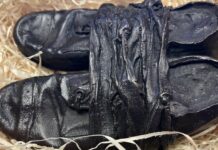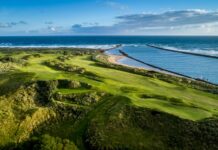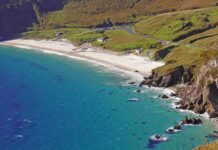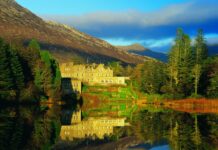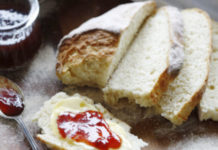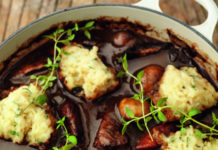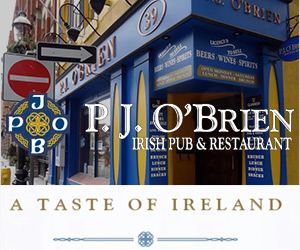By Brendan Farrell
Sixteenth-century Connacht could be an extremely dangerous place! It had yet to be brought to heel by the English and power was mercurial. Amongst the clans, internecine war was common with allegiances frequently shifting between rival clans and crown forces. This deadly power game would allow the Crown to take full advantage of Clan rivalries and in the case of the De Burcas, to take full advantage of the deepening rivalry between the Mayo and Galway De Burcas. This would ultimately lead to the total subjugation of Ireland and the complete collapse of the clan system.
In the West of Ireland, vast tracts of land were still controlled by Irish and Norman-Irish Catholic Clans, and the De Burgos; Normans who had arrived in the 12th Century led by William Fitz Adelm de Burgo were the major players. William in an attempt to consolidate his power base would marry into the Irish aristocracy by union with the daughter of the King of Thomond. William’s son, Richard de Burgo the ‘Red Earl’ would succeed in conquering the whole of Connacht in 1235 and would be granted the Overlordship of Connacht from Henry II making him, the most powerful man in Ireland.
The De Burgos would further consolidate their power by Castle building and adopting; Irish language, customs and dress and would eventually assume the Irish name form De Burca, marking their total integration into Irish society and becoming “Hiberniores Hibernis ipsis” (more Irish than the Irish themselves) De Burca is now more commonly recognisable in the anglicised forms of Burke or Bourke.
Gallowglass
The De Burca’s, in common with other dominant Irish Clans, did not hold a standing army and as was the practice of the day, augmented their forces of domestic lightly-armed foot soldiers known as Kerne with Scottish mercenaries, Galloglaigh or Gallowglass.
In 1259 the King of Connacht, Aedh o’ Conchobair(o’Connor) received a dowry of 160 fighting men through his marriage to the daughter of the Lord of the Isles Dubhgall Mac Somhairle(MacSorley). O’Connor had been seeking alliances in an attempt to counter further Norman incursions in Connacht, following the establishment of Roscommon Castle in 1269 in the heart of O’Connor territory.
O’Connor defiantly chose to take a stand in 1270 on the banks of the river Shannon at a place known as Ath-an-chip and skilfully out manoeuvred and out fought a powerful army of Anglo-Norman Lords led by Walter De Burgo, Lord of Connacht and Earl of Ulster and the Deputy-justiciar, Richard of Exeter, presumably aided by his Gallowglass warriors.
Aedh O’Conchobhair went to Doire-Choluim-Chille
to espouse the daughter of Dubhgall
Mac Somhairle; and he brought home eight score young
men with her, together with Ailin Mac Somhairle.
Annals of Loch Cé 1259
This initial trickle of fighting men would increase to a flood from the late 13th to the mid 14th century, mirroring the fortunes of the clans, caught between the Scottish and English Kings in the interminable Wars of independence. The next notable mention of Gallowglass would be in 1399 in Antrim in the North of Ireland following the marriage of John Mór MacDonnell Lord of the Isles, to Margery Bisset, “Heiress of the Glens.” MacDonnell would be appointed by the King of Ulster, Eoghan O’Neill as “Constable of the Scots in Ulster” effectively giving him control of all Gallowglass forces in the North of Ireland.
Big Mac’s
The Gallowglass originated from the Hebridean islands and Western Scotland and were of mixed Scottish and Norse stock. They shared a similar culture with the Irish and spoke the same Gaelic. The term Galloglaigh comes from the Irish “Gall” meaning stranger and “óglach” young warrior. They were typically men of great stature and strength with a fearsome reputation in battle.
“The galloglasses are picked and selected men of great and mighty bodies, cruel, without compassion.
The greatest force of the battle consisteth in their choosing rather to die than to yield, so that when it cometh to handy blows, they are quickly slain or win the field. They are armed with a shirt of mail, a skull, and a skeine. The weapon they most use is a battle-axe, or halberd, six foot long, the blade wherof is somewhat like a shoemaker’s knife, and without pike; the stroke wherof is deadly”.
Foremost amongst their weaponry were huge razor-sharp, double-handed battle axes and massive double-handed swords known as Claymores. Unlike their largely, lightly equipped Irish compatriots, the Galloglach would be better protected either with a habergeon or coat of mail or Actoun, a padded multi-layered coat which could also be worn as further protection under armour. This was normally surmounted with a crested steel helmet or bascinet. Each warrior was accompanied into battle by two boys or Knaves who would assist in carrying weapons and provisions.
By the mid-sixteenth-century, Gallowglass had become the backbone of virtually every Irish army and were very much a permanent feature in Ireland. The McDougals and MacDonnells were followed by other Gallowglas clans, – Macabes, McSweeneys, McDowells, MacSheehys, MacRorys, spreading to all provinces of Ireland and becoming an indispensable part of Irish martial society. Some were seasonal fighters, some like the MacDonnells came seeking land.
The MacDonnells, or Clandonnel as they were later known, arrived in the West of Ireland, in Galway and County Mayo in the early 1400s, establishing themselves throughout these counties. In Kilmaine, under the bonaught system (payment for military service), they would eventually acquire land and castles from their De Burca overlords and become a permanent presence in Mayo and Galway.
No Surrender!
The Gallowglass could be steadfastly loyal to their paymasters, refusing to yield in battle but they were “soldiers of fortune” turning their hand to any number of tasks that suited their special skills: assassination, cattle raiding, martial training.
It was not unusual for Gallowglass of the same clan to find themselves facing each other on opposing sides in battle. At the battle of Shrule in 1590, the Queen’s forces ably assisted by the Earl of Clanricarde, head of the Galway Burkes, faced the Mayo Burkes under their Clan leader Mac William Burke, with Gallowglass factions on both sides including MacDonnells.
The Battle Of Knockdoe
The battle of Knockdoe, reputedly the bloodiest recorded battle in Irish history with casualties estimates ranging from 2000 to 4000, was fought on and around a hillock in County Galway on August 19 in 1504. The two main protagonists were two Norman (Anglo)-Irish Lords – Gerald FitzGerald, Earl of Kildare, The Lord Deputy of Ireland and the Earl’s son-in-law, Lord Ulick Fionn Burke. Kildare was supported by the Mayo Burkes, some English and a confederacy of Irish Clans including the O’Donnells, O’Neils, McMahons, MacDermotts, O’Connors, O’Farrells, O’Reillys and Magennises, some 6000 men in total.
Kildare arrived first on the field of battle and chose the best position on the summit of Knockdoe. Ulick Fionn Burke, leader of the Galway Burkes, known as “The Clanrickarde,”arrived later, having spent the eve of the battle at his fortress, Claregalway Castle, drinking and playing cards with his men.
Burke took to the field with about 4,000 men including the O’Briens of Thormond, Macnamaras, O’Kennedys and O’Carrolls. Both sides had large contingents of Gallowglass.
The battle was long and bloody, lasting for most of the day. Ulick Burke attacked first, launching a full-frontal assault with his Gallowglass “stormtroopers” charging uphill into the sun. The Gallowglass attack was initially repulsed by a devastating shower of arrows from the Earl’s bowmen but the Gallowglass columns moved forward with dogged determination engaging their enemies in hand-to-hand combat.
Gradually the Earl’s numerical and territorial advantage would prove decisive with the Earl mounting a counter-attack pushing the attackers down and up against the Clare River where the bloodiest fighting took place.
The Aftermath
“ for the plain on which they were, was impassable, from the vast and prodigious numbers of mangled bodies stretched in gory litters; of broken spears, cloven shields, shattered battle-swords, mangled and disfigured bodies stretched dead, and beardless youths lying hideous, after expiring..”’
Ostensibly, the battle appeared to be a domestic affair between the two great Burke houses over the Lordship of Connacht, additionally, Fitzgerald’s sister Estacia was married to Burke and there were allegations of impropriety between Burke and the wife of a loyal Fitzgerald Lord, however ,the outcome would have far-reaching ramifications on the course of Irish history: Kildare, who was allied with the English Crown, would further extend English influence into the West of Ireland paving the way for the complete domination and pacification of Gaelic Ireland by Elizabeth I.
Knockdoe, “Cnoc Tuagh” or “hill of the axes,” derives from the iconic Gallowglass axe which played such a devastating part in the battle. Knockdoe now stands as a fitting memorial to those brave Scottish warriors who performed such a huge role in the history of Ireland.





